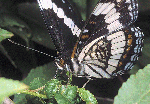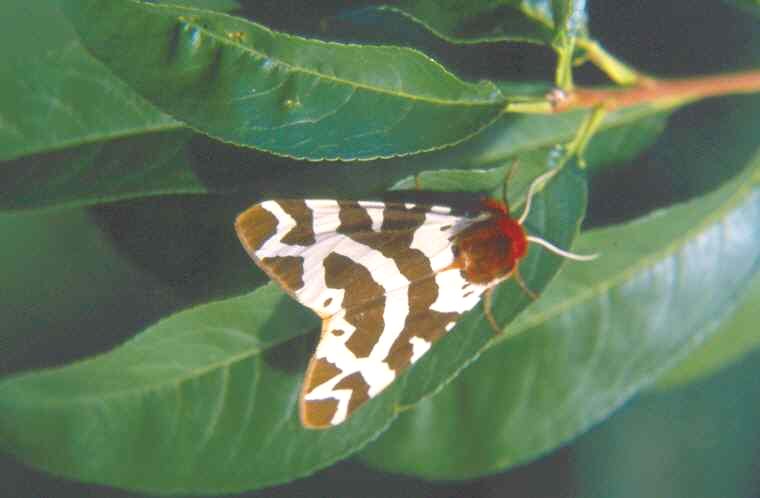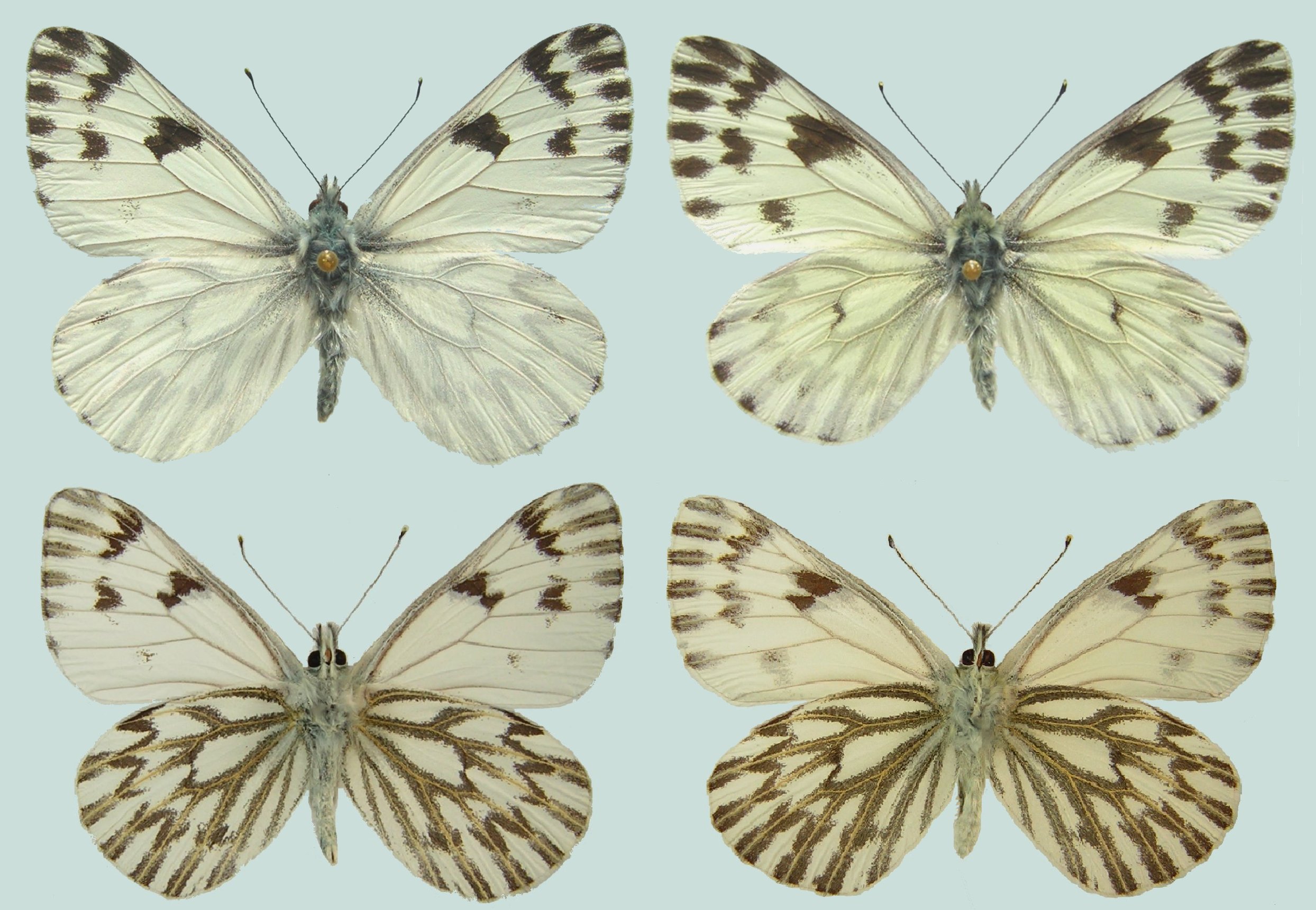
Utah Lepidopterists' Society
Founded 6 Nov 1976

|
|
Utah Lepidopterists' Society Founded 6 Nov 1976 |
|
| History | Mission | Meetings | Bulletin | Checklists | Links | Community | Field Trips | Habitat | Members | Kids | Contact Us |
Pieris sisymbri nigravenosa
(Dark-veined Spring White)
 |
|
| Adults | Mature
Larva (On Streptanthus
cordatus)
|
|
|
|
| Example
of habitat
|
Example of hostplant--Arabis holboellii --Photo Courtesy Keir Morse |
General:
The Type Locality of P. sisymbri nigravenosa is the Spring Mountains, 2 road miles north of Red Cloud Mine, Clark County, Nevada; Austin & J. Emmel. It was recently described. To quote the authors, "... is a phenotype which is obviously (italics added) distinct."
For years, this taxon has been misunderstood and misidentified by some local collectors as Pieris sisymbri elivata. However, elivata refers to those high altitude populations of P. sisymbri with darker markings. Nevertheless, nigravenosa flies in relatively low altitudes, is phenotypically consistent displaying a very dark ventral hindwing venation that is fairly uniform throughout its vast distribution in the Great Basin and in the Mojave Desert.
Utah Distribution and Habitat:
As discussed previously, nigravenosa flies in Utah's Basin and Range Province including all the ranges of Utah's West Desert, The Stansbury Mountains, Oquirrh Mountains, Lake Mountains south to Utah's Dixie. It also replaces P. sisymbri sisymbri in the Wasatch Range in the vicinity of Willow Creek (Mona Canyon.)
Further research would be helpful in understanding the exact ranges of P. s. nigravenosa and P. sisymbri sisymbri to see if the two taxa overlap in order to analyze their propensity to provide intermediates.
Bionomics:
In the Basin and Range Province, Pieris sisymbri nigravenosa is more polyphagous than its counterpart Anthocharis sara thoosa. In other words, larvae can not only be found in the inflorescens of thoosa favored hosts, Arabis perennans, Arabis holboellii, and Descurainia pinnata, but also females will also oviposit on Euchloe hyantis lotta favored host Streptanthus cordatus. These three hostplants are mostly found taking refuge under Juniper trees--excepting Arabis perennans which also grows in rocky areas. Other plants in the region that nigravenosa uses are Sisymbrium altissimum and Caulanthus lasiophyllus.
In fact, lab rearing of sisymbri is fairly easy since larvae will also accept 'junk" mustards such as White top (Cardaria draba,) Dyar's Woad (Isatis tinctoria,) and Black Mustard (Brassica nigra.)
Note: Those who wish to rear P. sisymbri in the lab should avoid using Descurainia sophia. Although females of P. sisymbri will oviposit on montane-growing D. sophia that grows with D. pinnata, larvae, ultimately, will perish on D. sophia because of poisonous toxins. Descurainia sophia can be a trap for new lepidopterists wanting to raise montane pierids like Anthocharis spp., Euchloe spp., and Pieris (Pontia) spp., because of its availability in nearby disturbed city neighborhoods. Nevertheless, larvae of P. sisymbri and A. s. thoosa will accept this mustard in the lab; but will later die. (In the case of A. sara, they will die rather quickly.)
Females of P. sisymbri use Arabis spp. both as a larval food plant as well as a nectar source. Many times females of P. sisymbri nigravenosa will nectar on the flowers and then fly down to the basal leaves to deposit an ova; only to return again to nectar. Females will often repeat this course of action--laying several ova on a single Arabis plant. (Their oviposition preference almost always seems to be down below on the basal leaves--contrasted to Anthocharis thoosa females which lay their eggs as singletons on the flowers.)
The ova are green turning orange after 24 hours; hatching in about 4-5 days. First instar larvae are cannibalistic and will consume other sisymbri ova that it finds as it works its way up the main stalk of the hostplant towards the flowers.
The young first instar larva is light colored with a dark head. Second and third instar larvae of P. sisymbri oftentimes will surprise lepidopterists in the field as they can be stunningly blackish in appearance. As the larva moults into later instars, an appearance similar to the mature larva of a black and yellow striped caterpillar begins to appear.
Hibernation is as pupa. For those rearing P. sisymbri nigravenosa in the lab, most pupae will bypass emergence after 1 year and will emerge during the second or third year of diapause. In fact, P. sisymbri pupae can be just as fussy as A. stella and A. sara thoosa in extending diapause, even if you keep pupae moist during critical photoperiods in the early spring. (Thank goodness that they're not as fussy as Anthocharis cethura pima.) For photos of a developing P. sisymbri nigravenosa pupa, please click here.
For more images of this butterfly, please see Nicky Davis' Wild Utah website!
All images of Limenitis weidemeyeri on the ULS Info Bar courtesy Jay Cossey